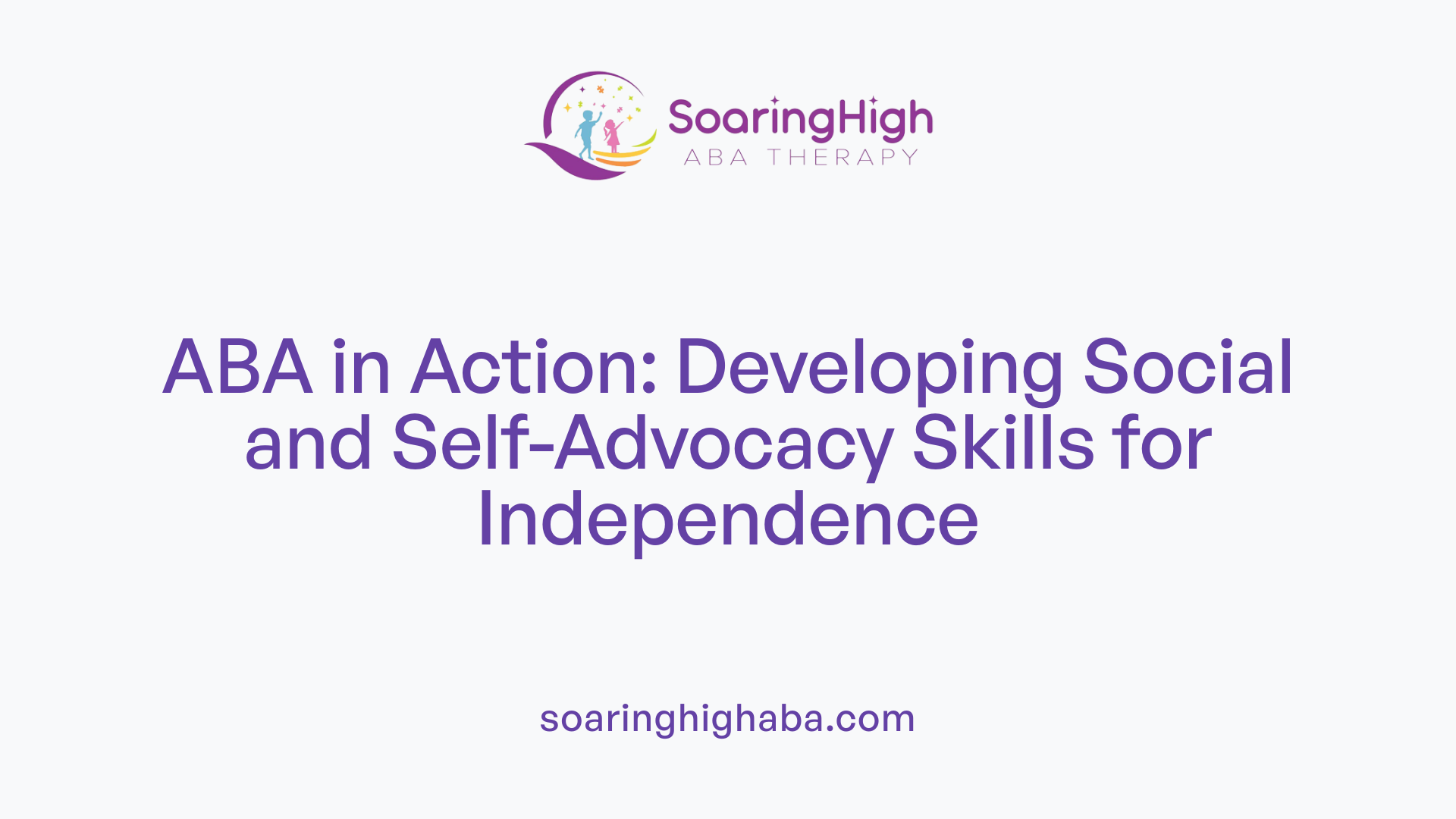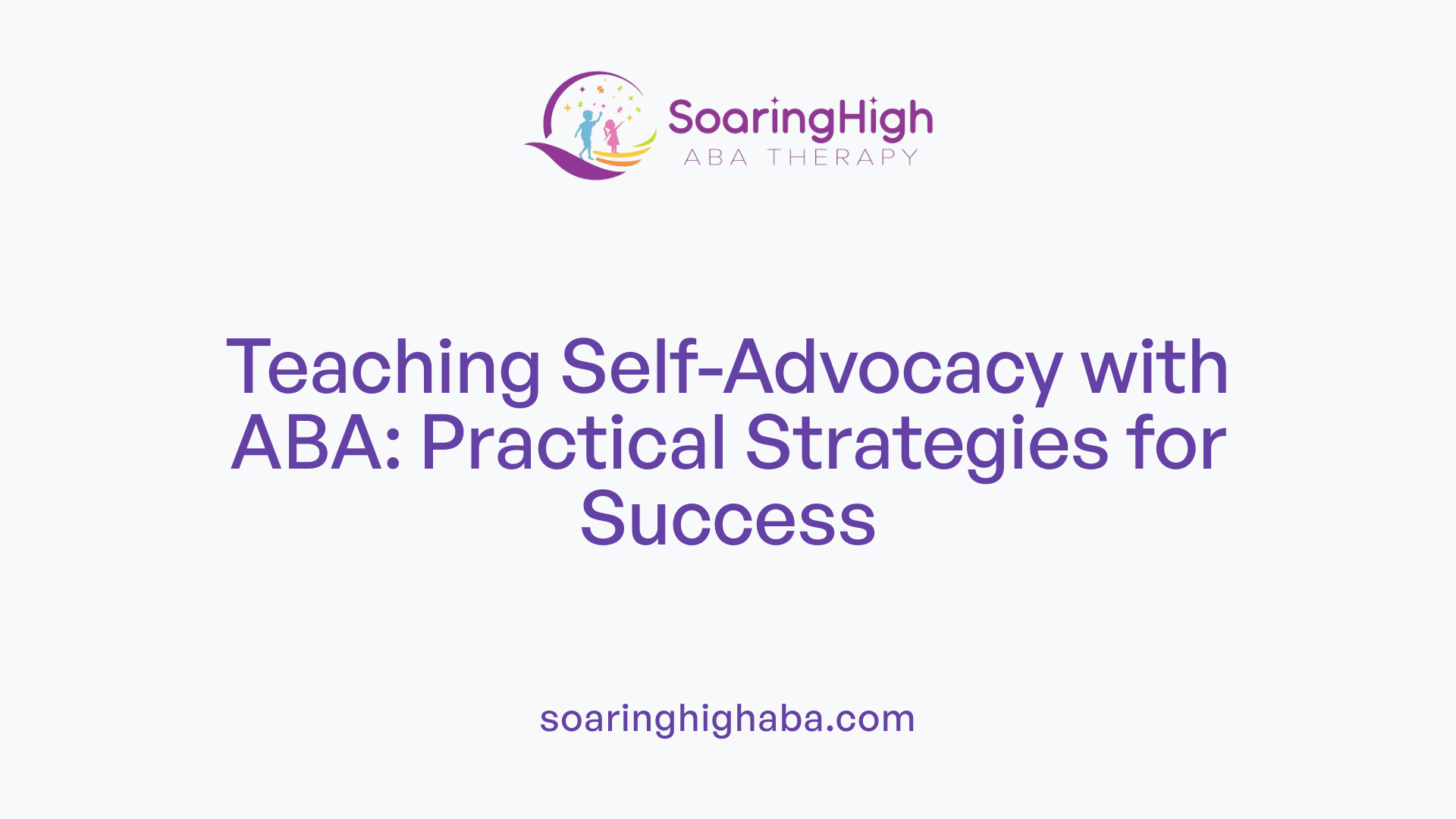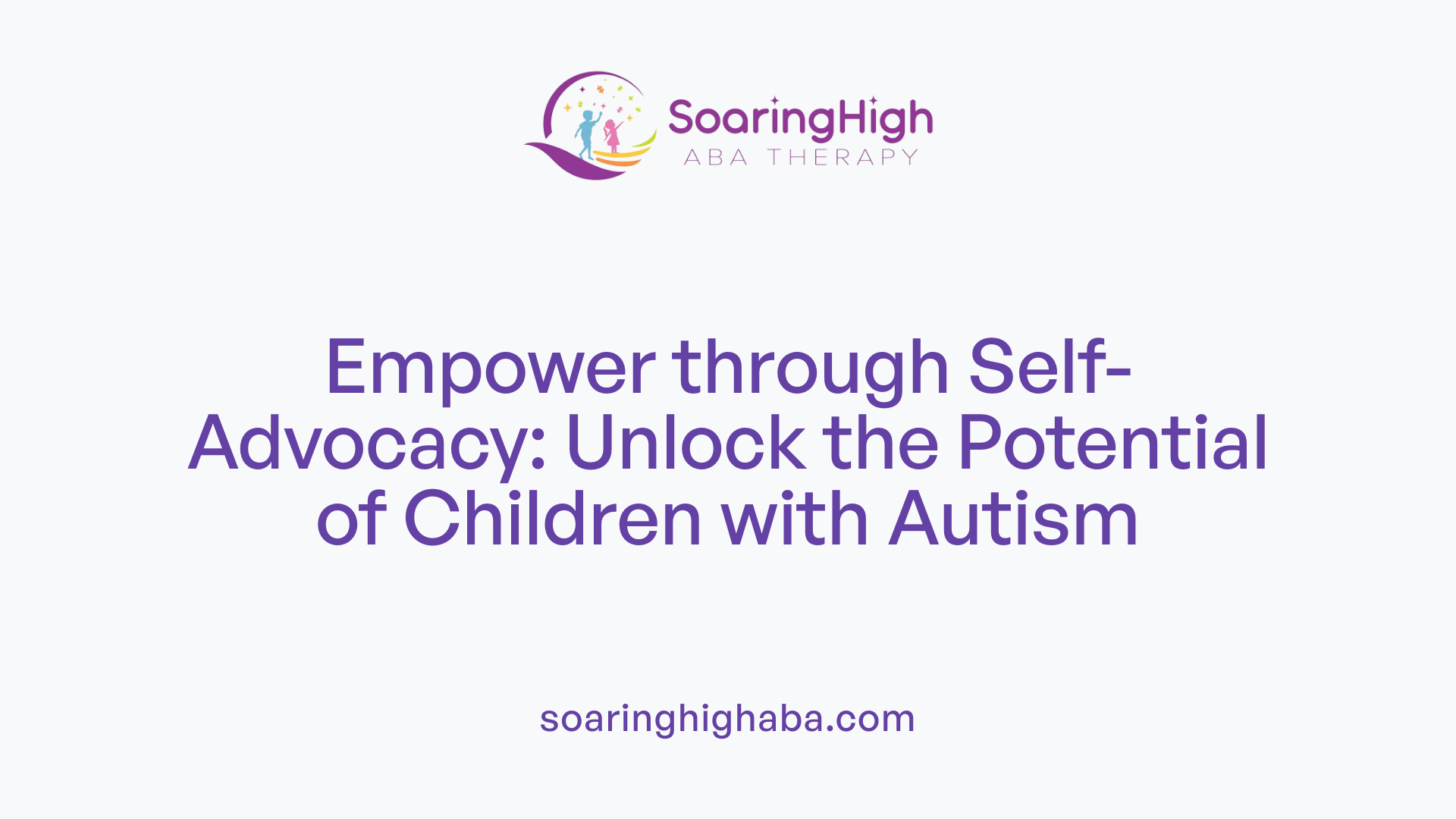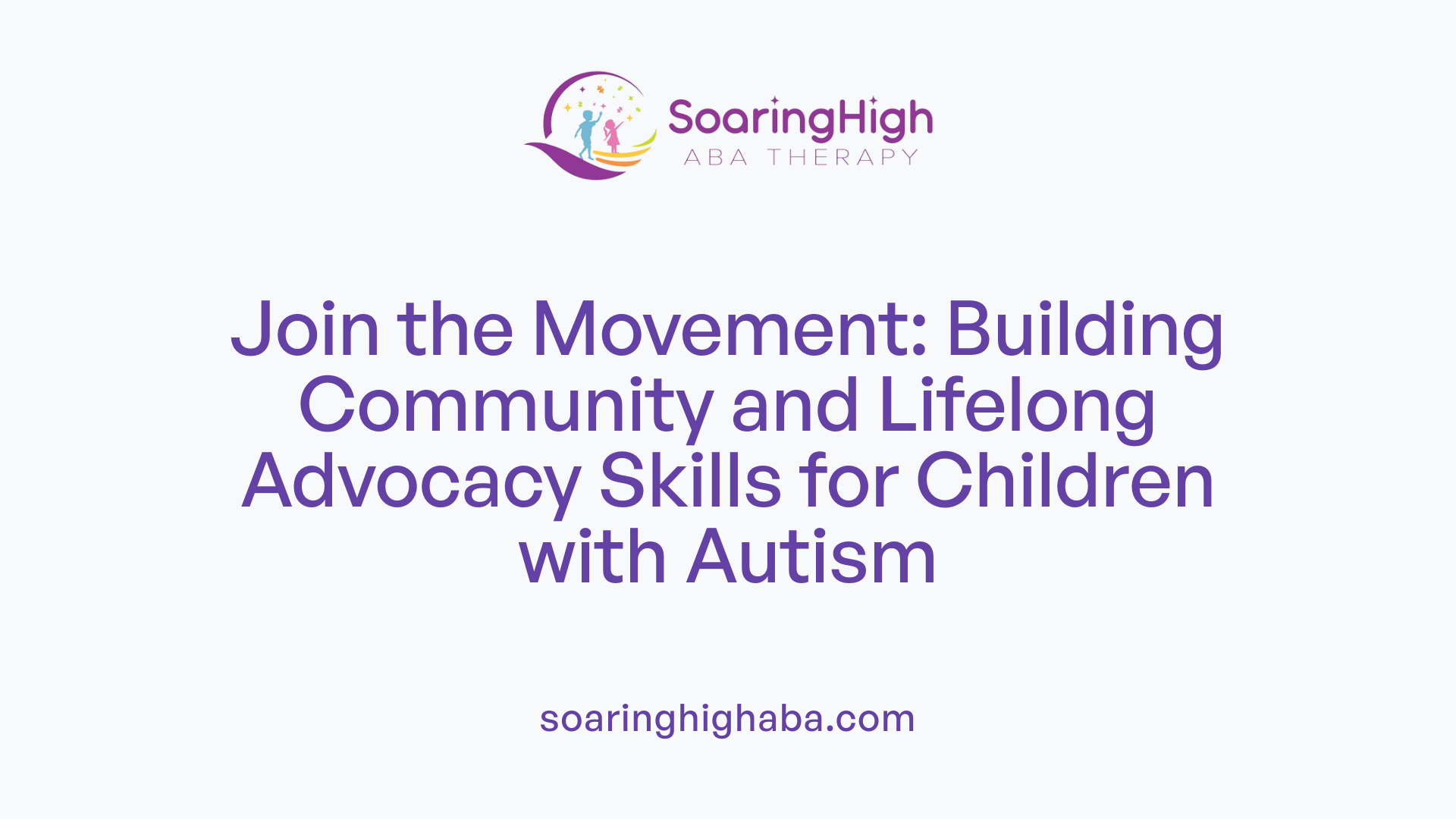Understanding the Importance of Self-Advocacy in Autism
Self-advocacy skills are crucial for children with autism to achieve independence, confidence, and a sense of control over their lives. These skills facilitate effective communication, decision-making, and navigating complex social and educational environments, which are essential for lifelong success. Implementing targeted approaches through Applied Behavior Analysis (ABA) can significantly enhance the development of these skills, equipping children to express their needs and rights confidently.
Foundations of Communication and Advocacy Support
What resources are available to support children with autism in learning to communicate and advocate for themselves?
Supporting self-expression and advocacy in children with autism involves a variety of specialized resources. Speech-language therapy is a cornerstone, helping children improve their expressive and receptive communication skills. Therapists use tailored approaches to teach children how to effectively share their needs, desires, and feelings.
Augmentative and alternative communication (AAC) systems, such as speech-generating devices, visual communication boards, and apps, are vital tools for children who have difficulty with spoken language. These systems empower children to express themselves fully and reduce frustration while fostering independence.
Visual supports play a crucial role in teaching daily routines, social interactions, and communication cues. Social stories and visual cues aid children in understanding social norms, their rights, and how to navigate different situations.
Functional communication training (FCT) is an evidence-based method that teaches children alternative ways to communicate when traditional speech isn't enough. It emphasizes replacing problematic behaviors with functional, socially appropriate communication methods.
Early education focused on self-advocacy involves teaching children about their rights and responsibilities through social stories, role-playing, and participating in decision-making scenarios. Education about protections under laws like the ADA and IDEA instills confidence and awareness.
Organizations such as Autism Speaks and the Autism Self Advocacy Network (ASAN) are vital resources, offering toolkits, guides, and community programs aimed at developing advocacy and communication skills. They facilitate access to assessments, accommodations, and community involvement.
Involving families, educators, and peer models in practical activities enhances learning. Consistent practice using tailored resources and tools helps children build lifelong skills in self-advocacy.
Ultimately, customization to each child's abilities, along with patience and ongoing support, fosters confidence and independence. These resources work together to help children with autism communicate their needs effectively and advocate for themselves throughout life.
The Role of ABA in Developing Social and Self-Advocacy Skills

How does ABA therapy help in developing self-advocacy and social skills in children with autism?
ABA therapy plays a vital role in helping children with autism develop essential social and self-advocacy skills. It offers a structured approach to teach children how to express their needs clearly, make decisions, and stand up for themselves. By implementing tailored interventions such as role-playing and social stories, ABA helps children understand social cues and navigate interactions more confidently.
One of the core components involves using strategies like positive reinforcement to encourage desired behaviors, such as initiating conversations, sharing feelings, and understanding others’ emotions. Video modeling and social narratives are commonly used to model appropriate social behavior, improving children’s ability to interpret nonverbal signals and respond effectively.
Group-based social skills training within ABA settings offers children real-world practice by interacting with peers. This helps them build empathy, develop friendships, and learn important skills like turn-taking and respecting personal boundaries. These activities foster confidence and social competence.
ABA also targets executive functioning—important skills like planning, organizing, and problem-solving—through visual supports, task analysis, and prompting. These tools empower children to independently organize their social and daily routines.
Overall, ABA helps children with autism become more self-aware, capable of making choices, and comfortable expressing their needs. These improvements are fundamental for developing self-advocacy and thriving socially as they grow.
Implementing ABA Strategies to Promote Self-Advocacy

What methods can be used to implement ABA-based approaches to foster self-advocacy skills in children with autism?
Applied Behavior Analysis (ABA) offers effective methods for teaching children with autism how to advocate for themselves. Central to this approach is developing personalized intervention plans that target specific skills and needs. These plans often include visual supports such as schedules, cues, and communication boards to help children understand their options and express themselves clearly.
Social stories are another powerful tool. They narrate everyday situations, guiding children on how to communicate their needs, ask for help, or set boundaries appropriately. Role-playing activities are also employed, where children practice real-life scenarios in a safe environment, reinforcing how to ask for accommodations, express their feelings, or request assistance.
Behavioral techniques like reinforcement, modeling, and prompting are integral. Positive reinforcement encourages children to use desired behaviors, such as requesting a break or explaining their feelings. Modeling demonstrates appropriate communication and behavior patterns, while prompts gradually fade as the child gains independence.
Supporting self-awareness is key. Activities that identify personal strengths, sensory preferences, and challenges help children understand themselves better, laying the foundation for effective self-advocacy. For example, teaching children to recognize when they are overwhelmed and need a break promotes autonomy.
Decision-making frameworks, such as decision trees, enable children to weigh options and choose responses that protect their well-being. These tools can be visually displayed to guide choices.
Collaboration among families, educators, and support teams via IEP (Individualized Education Plan) meetings and transition planning supports skill generalization across settings. Consistent use of assistive communication devices, such as speech-generating apps, enhances expression.
Finally, gradually increasing opportunities for autonomous decision-making and self-expression boosts confidence. This comprehensive approach ensures children with autism develop the skills necessary to advocate for their needs confidently, safely, and independently.
Effective Techniques and Practice in Teaching Self-Advocacy via ABA
What are effective techniques and strategies for teaching self-advocacy skills to children with autism through ABA?
Teaching self-advocacy to children with autism using Applied Behavior Analysis (ABA) involves a variety of methods tailored to individual needs. One fundamental approach is explicit instruction, which clearly teaches communication and self-awareness skills. This means breaking down complex concepts into manageable steps and using simple language that the child can grasp.
Visual supports and checklists are essential tools. They help children understand routines, recognize their feelings, and track progress. For example, emotion charts or visual schedules can help children identify their needs and communicate them effectively.
Role-playing and real-life practice are also vital. These activities simulate social situations in a controlled environment, giving children the opportunity to practice expressing their needs, making choices, and handling different scenarios confidently.
Involving the child in planning groups, like IEP meetings, encourages participation and self-determination. This participation helps children understand their needs and how to advocate for themselves.
Teaching children about their diagnosis and when and how to disclose their needs enhances their ability to advocate effectively. This education empowers children to be aware of their rights and promote their independence.
Functional routines, such as using calendars or checklists, foster self-management skills. These routines provide structure and predictability, which build confidence.
It's important to customize ABA programs based on ongoing data collection. Focusing on generalization—applying skills across settings—and promoting independence are crucial for meaningful and lasting development.
By combining these strategies, caregivers and professionals can support children with autism in developing self-advocacy skills that promote confidence, independence, and successful social interactions.
The Significance of Self-Advocacy in Autism and the Role of ABA

Why are self-advocacy skills important for children with autism and how can ABA facilitate their development?
Self-advocacy skills are crucial for children with autism because they empower them to independently communicate their needs, preferences, and rights. These skills lay the foundation for building self-confidence and foster autonomy, enabling children to navigate social, educational, and community environments more effectively.
Having the ability to express oneself clearly is vital during important moments such as IEP meetings, where children can voice their goals and concerns. Additionally, self-advocacy promotes active participation in decision-making about their lives and supports a sense of control.
Applied Behavior Analysis (ABA) plays a pivotal role in developing these skills. It systematically teaches children how to make requests, solve problems, and interact socially through structured and personalized interventions. Techniques like role-playing, visual prompts, and positive reinforcement help children practice and solidify these skills.
Incorporating self-advocacy training across various settings with collaboration among parents, teachers, and therapists ensures these skills are generalized beyond therapy sessions. This consistency helps children internalize their abilities, leading to sustained independence.
Through targeted teaching, children with autism can learn to advocate for themselves effectively. Such skills are integral to leading independent, confident, and fulfilling lives. Promoting self-advocacy not only benefits individual growth but also enhances their engagement and integration into society.
Strategies for Embedding Self-Advocacy in Daily Routines and Transitions

What are effective techniques for teaching self-advocacy skills that can be integrated into daily routines and transitional periods?
Supporting children with autism in developing self-advocacy during everyday routines and transitions involves practical strategies that foster independence and confidence.
One key approach is establishing consistent routines that incorporate visual supports such as social stories, emotion boards, and checklists. These tools help children understand what to expect, reduce anxiety, and encourage proactive communication about their needs.
Involving children in planning daily activities allows them to practice decision-making skills. This can be as simple as choosing what clothes to wear or selecting a preferred activity. Role-playing transitional situations—like moving from class to recess or preparing for bedtime—further prepares children to handle change smoothly.
Visual cues, such as emotion charts and cue cards, empower children to recognize and communicate their sensory preferences or discomforts. For example, teaching them to signal when they feel overwhelmed or need a break promotes self-awareness and advocacy.
Collaborating with support teams—teachers, therapists, and caregivers—to set measurable goals ensures these skills are reinforced consistently across environments. Regular practice and positive reinforcement help solidify self-advocacy behaviors.
Teaching children to express their specific needs, such as requesting preferred sensory inputs or setting boundaries, builds resilience. This creates a foundation for managing transitions confidently and encourages a sense of control.
Overall, integrating these techniques into daily routines and transitional periods nurtures independence, prepares children to face everyday challenges proactively, and supports their journey toward self-advocacy and self-confidence.
Building Community and Advocacy Skills for Lifelong Empowerment

How can community involvement and advocacy organizations support the development of self-advocacy skills in children with autism?
Community involvement and advocacy organizations are instrumental in nurturing self-advocacy skills within children with autism. They create inclusive environments where children can engage in activities that promote social participation, such as sports, art classes, and sensory-friendly events. These experiences not only build social skills but also foster confidence and independence.
Organizations like the Autism Self Advocacy Network (ASAN) play a pivotal role by promoting the recognition of neurodiversity and advocating for the rights of autistic individuals. They provide valuable resources, including toolkits, policy briefs, and workshops, that educate families and children about their rights and how to advocate for themselves effectively.
Participating in community programs enables children to practice decision-making and self-awareness in real-world settings. These opportunities help children develop the ability to express their needs and preferences confidently. Long-term empowerment is rooted in building these skills early, encouraging children to take active roles in their own lives and advocating for an inclusive society.
Building strong relationships with advocacy groups also gives families access to extensive support networks and keeps them informed of legal protections under laws like the Americans with Disabilities Act (ADA) and the Individuals with Disabilities Education Act (IDEA). This knowledge equips families and children with the confidence to navigate systems and seek accommodations, promoting ongoing self-advocacy.
By fostering these skills and relationships, children with autism can experience greater acceptance, autonomy, and readiness for lifelong self-advocacy. This empowerment not only improves their quality of life but also helps shape a more inclusive community that values neurodiversity and individual strengths.
Fostering Autonomous Self-Advocacy for a Fulfilling Future
Developing self-advocacy skills in children with autism through ABA is a comprehensive, collaborative process that involves tailored communication supports, social skills training, everyday practice, and community involvement. The systematic application of ABA techniques not only enhances social and communication competencies but also promotes independence and confidence. By leveraging available resources and fostering meaningful engagement across various environments, parents, educators, and therapists can empower children to articulate their needs, rights, and preferences effectively. As these children grow, ongoing community participation and advocacy will ensure they lead autonomous, fulfilling lives, guided by their own voices and choices.
References
- Empowering Children with ASD: Self-Advocacy and ...
- How To Advocate for Your Child With Autism
- Understanding the Autism Self Advocacy Network
- How ABA Therapy Helps With Social Skills
- How to Foster Self-Advocacy Skills in Children with Autism
- Guide: Teaching Self-Advocacy to Neurodivergent Kids
- How to Use ABA to Advocate for Your Special Needs Child





































































































